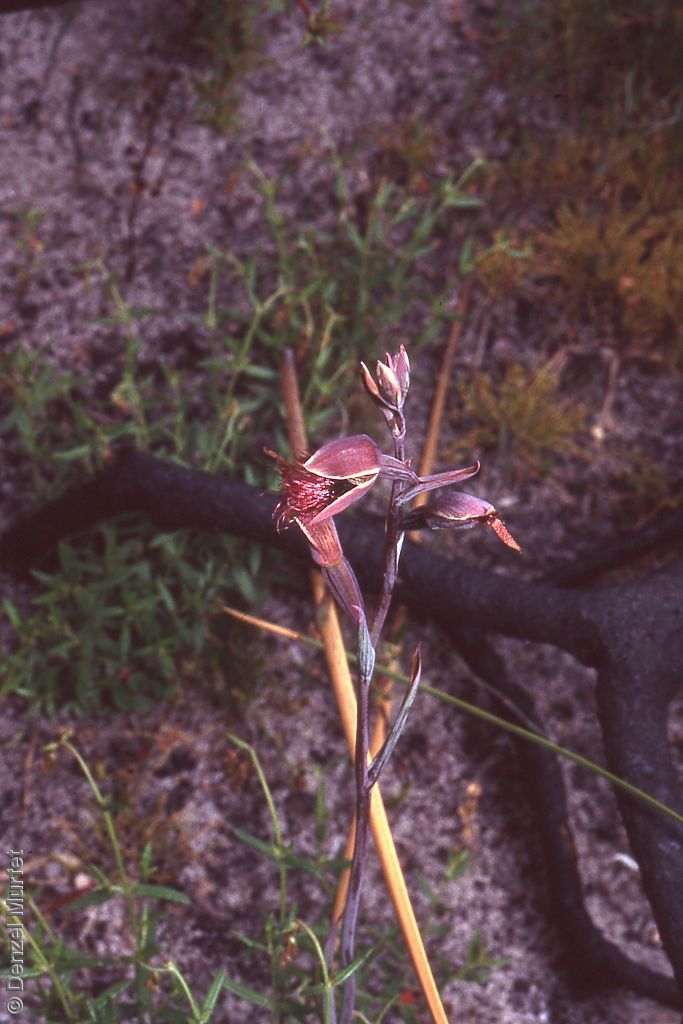
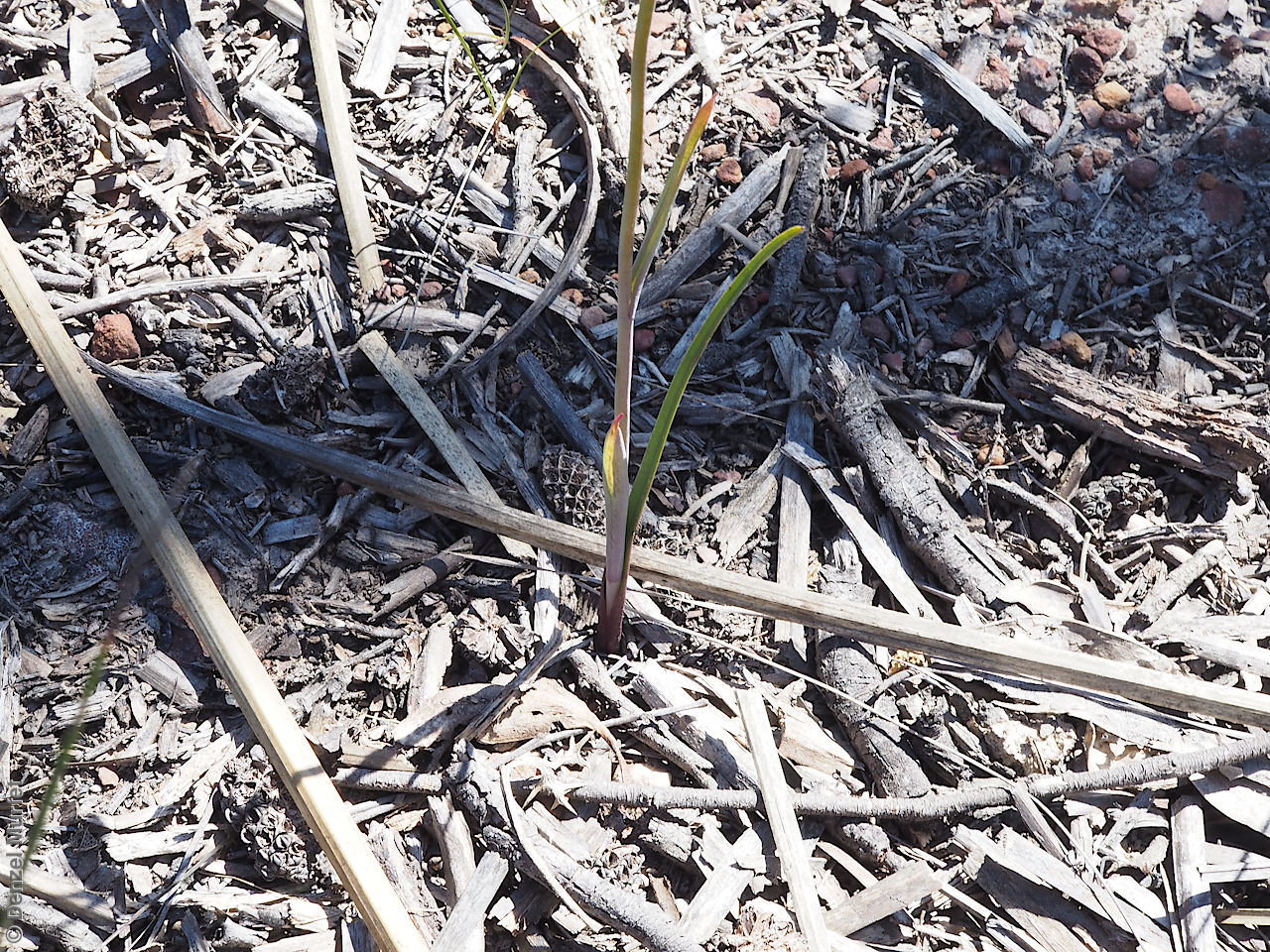
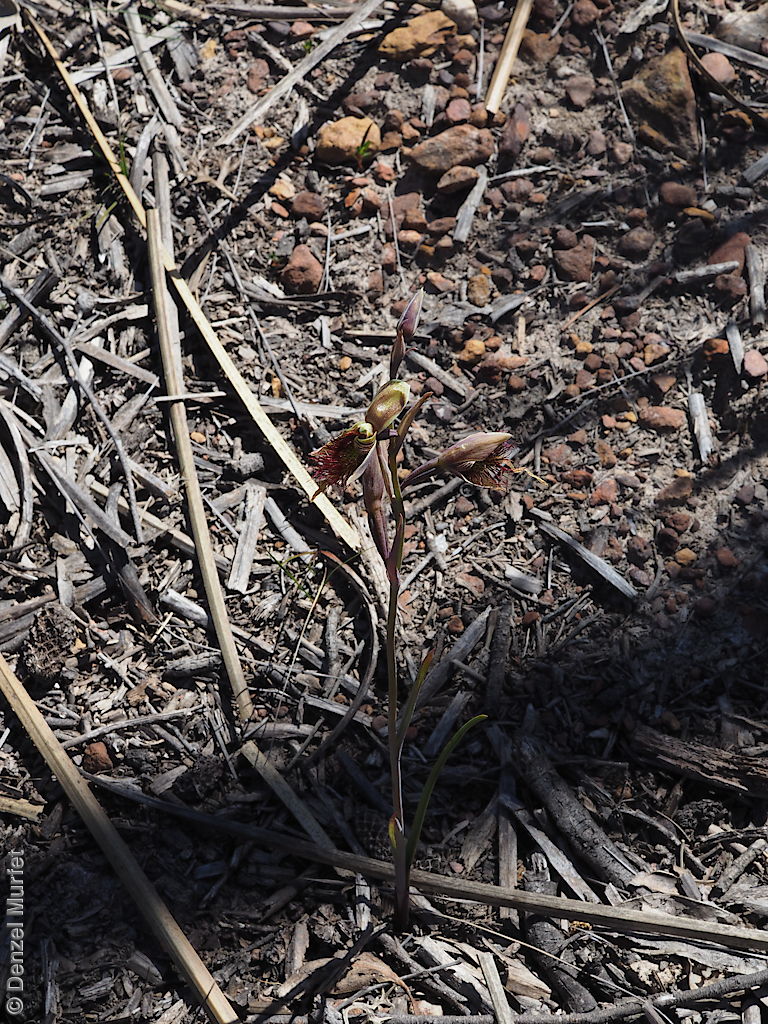
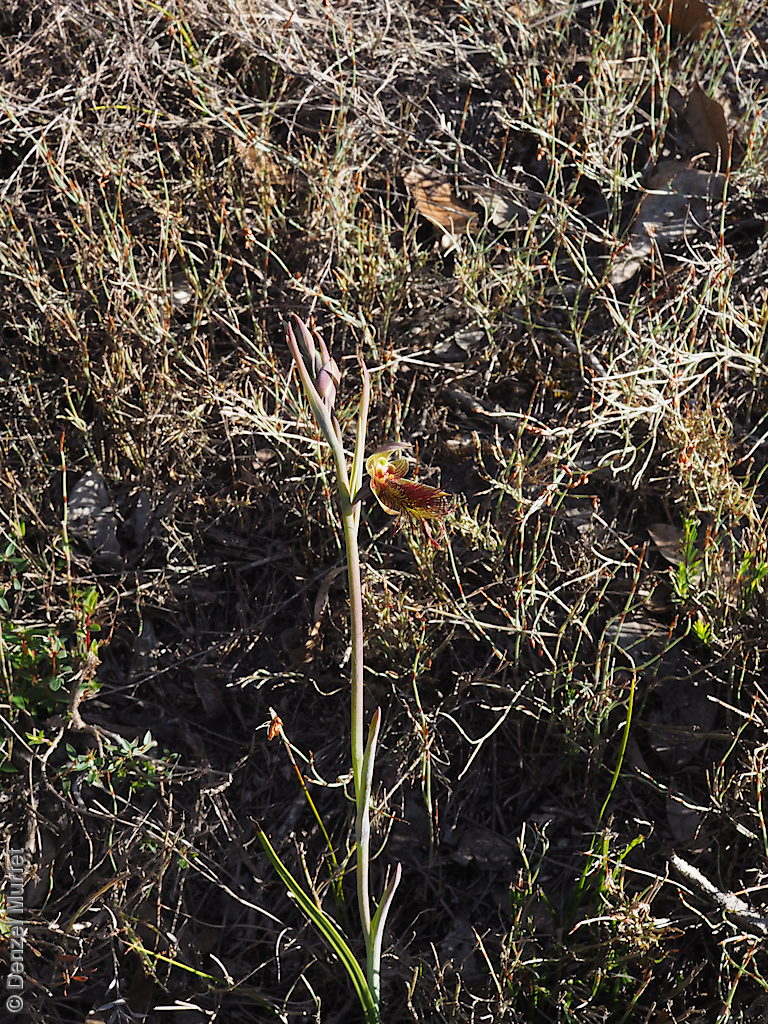
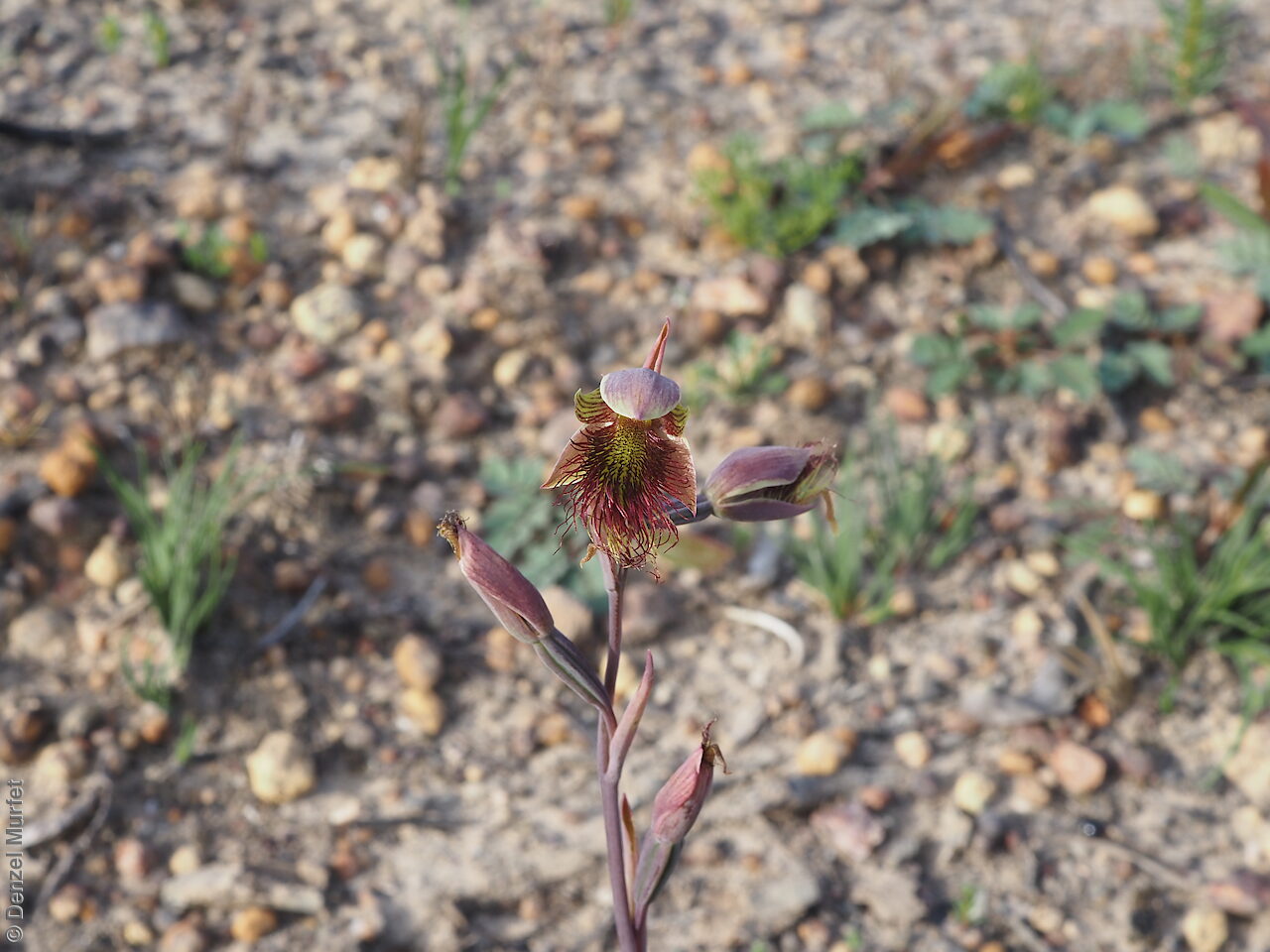
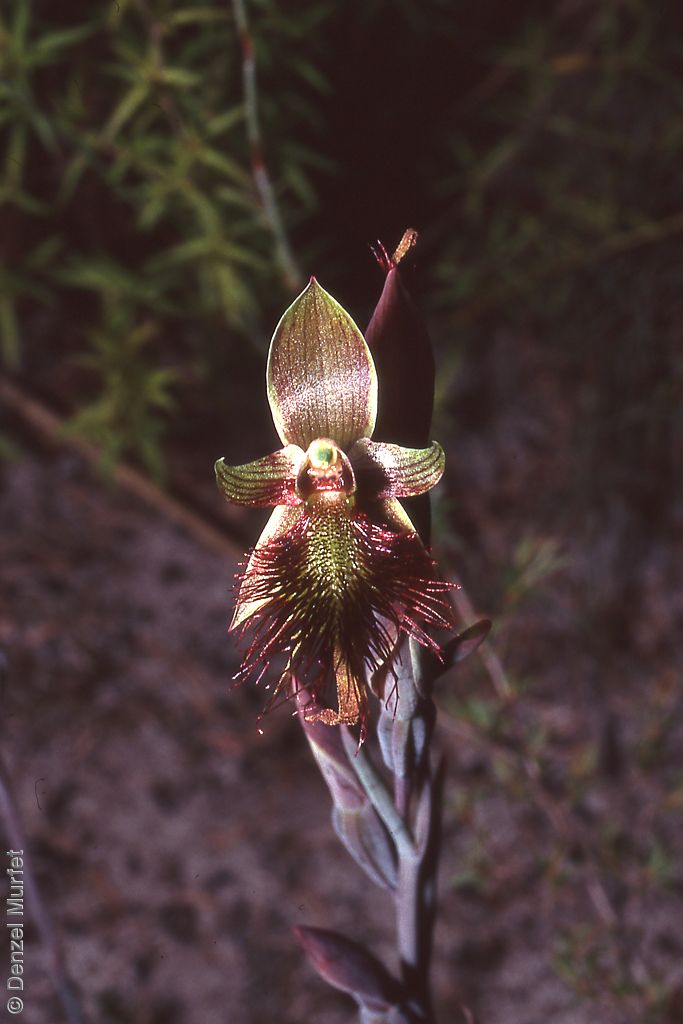
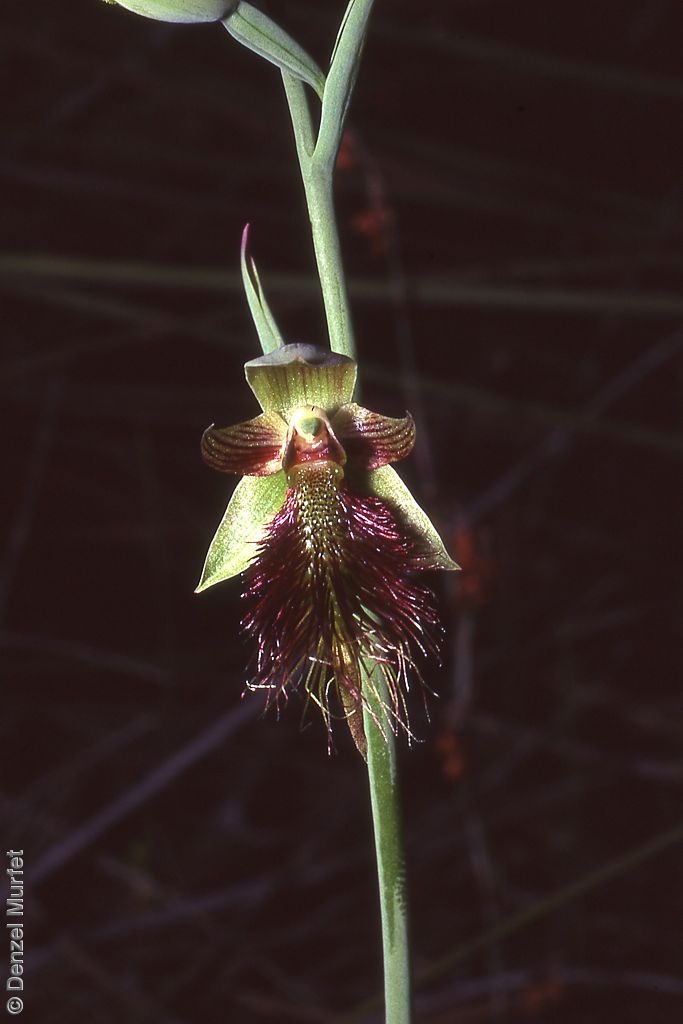
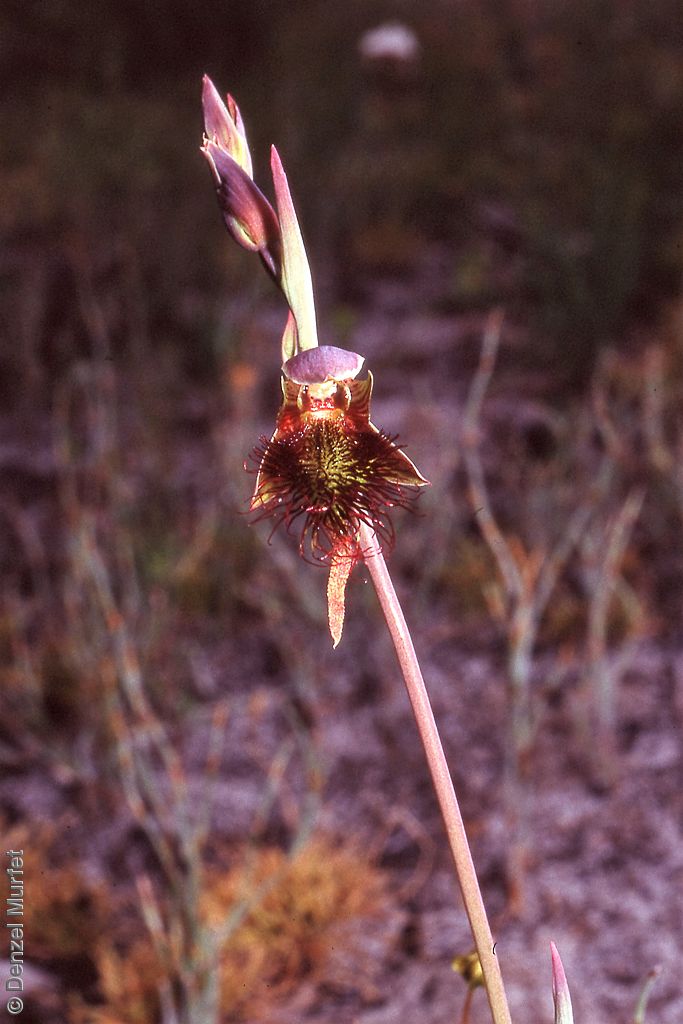
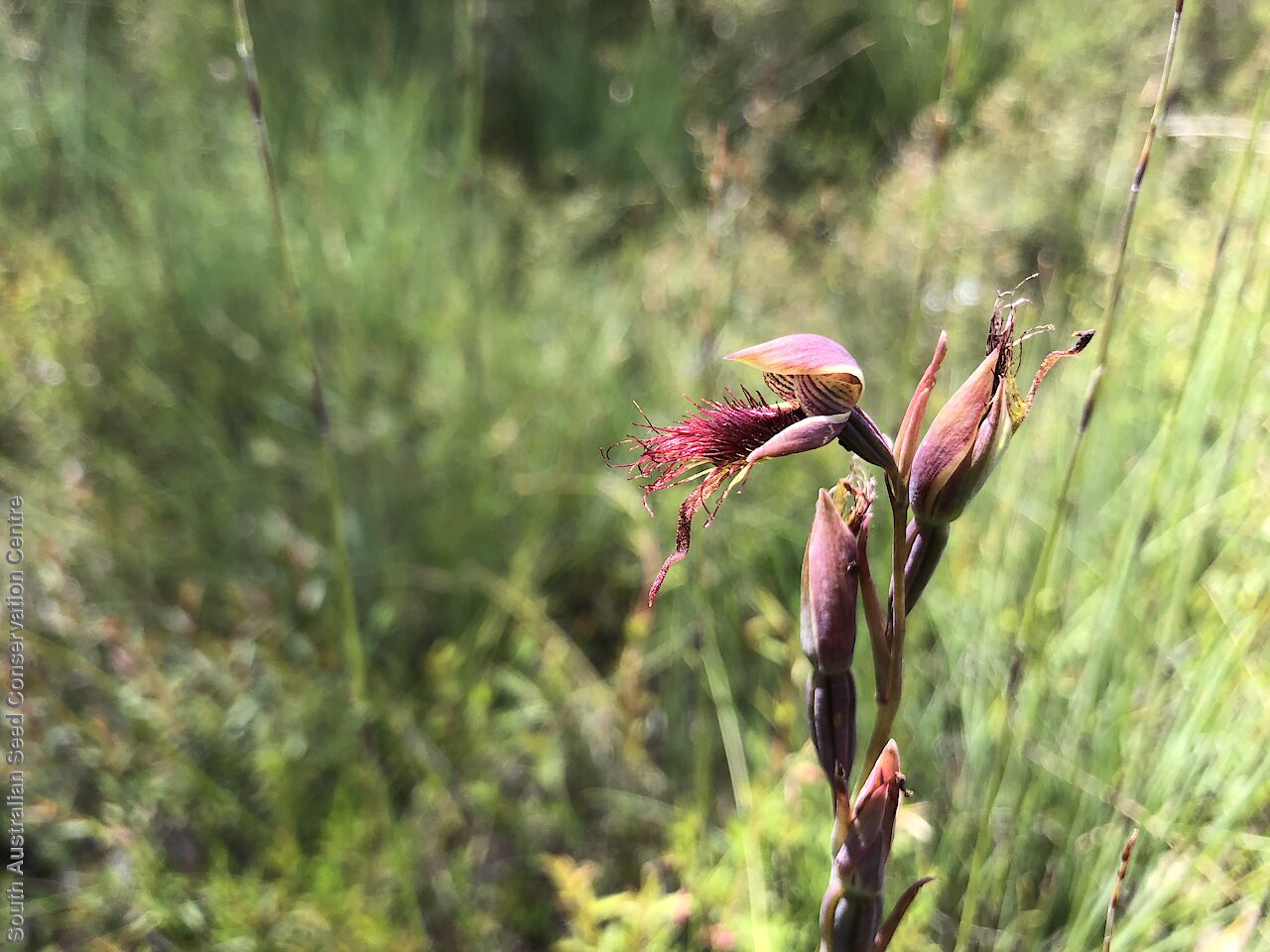
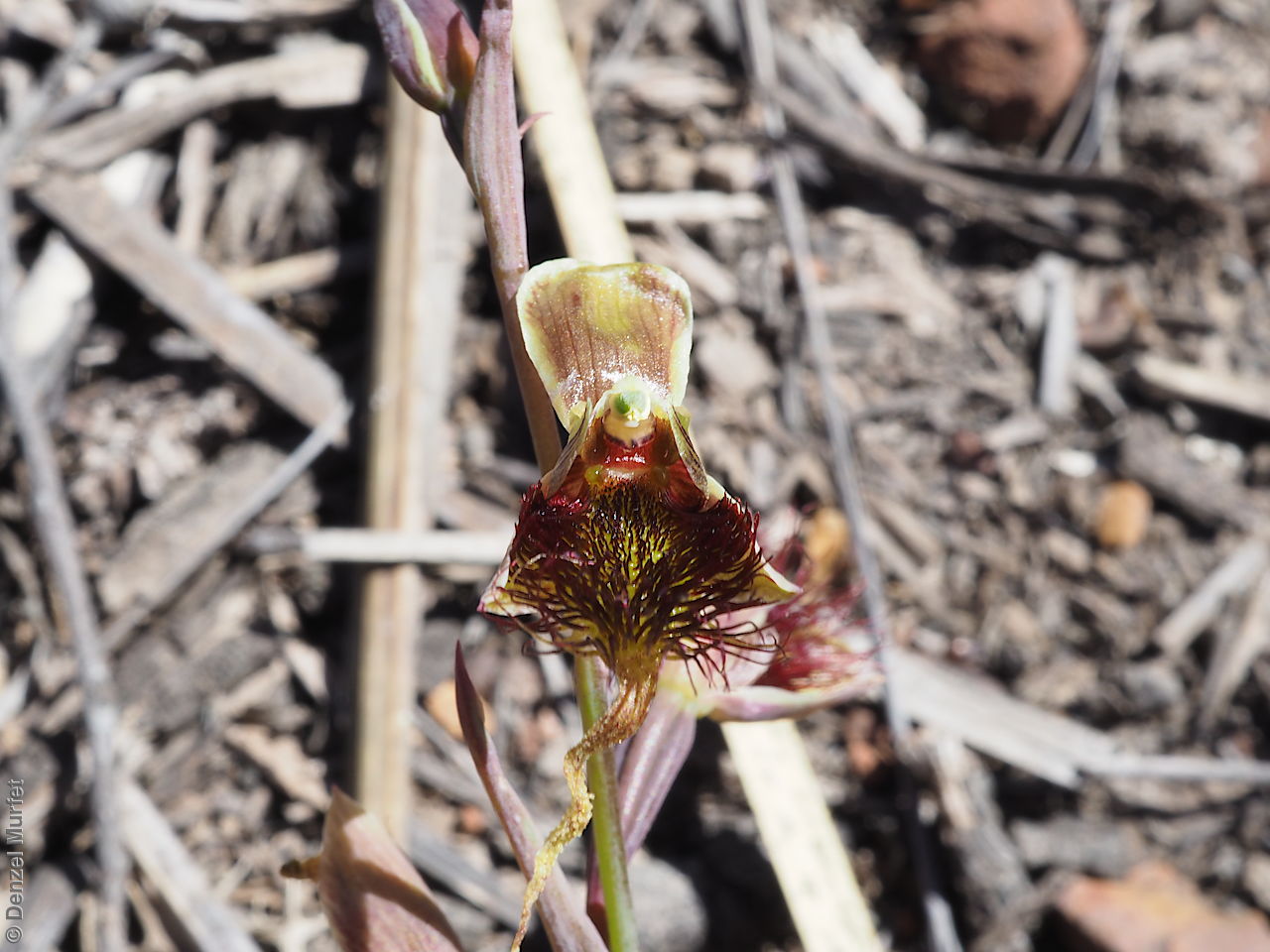
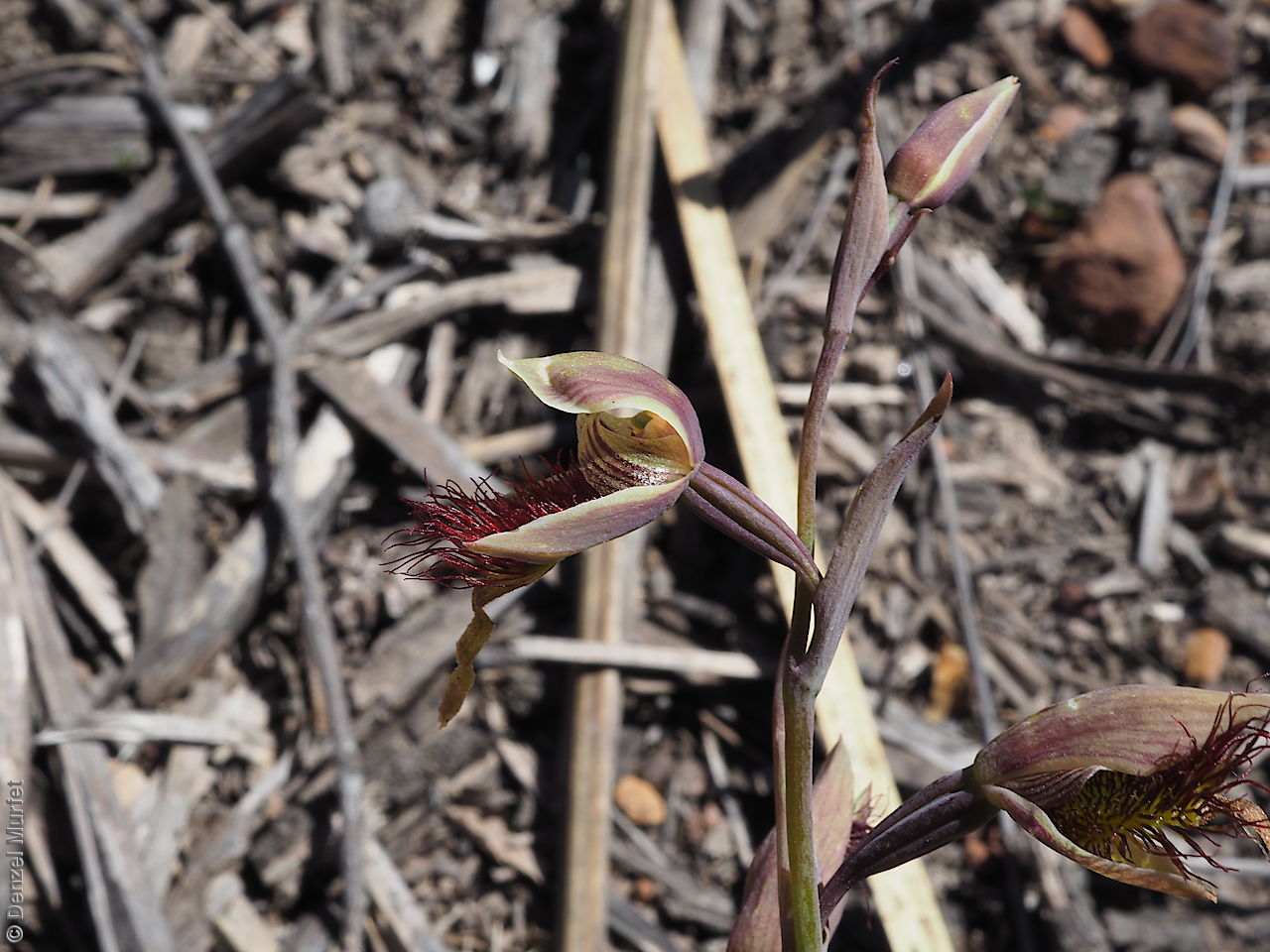
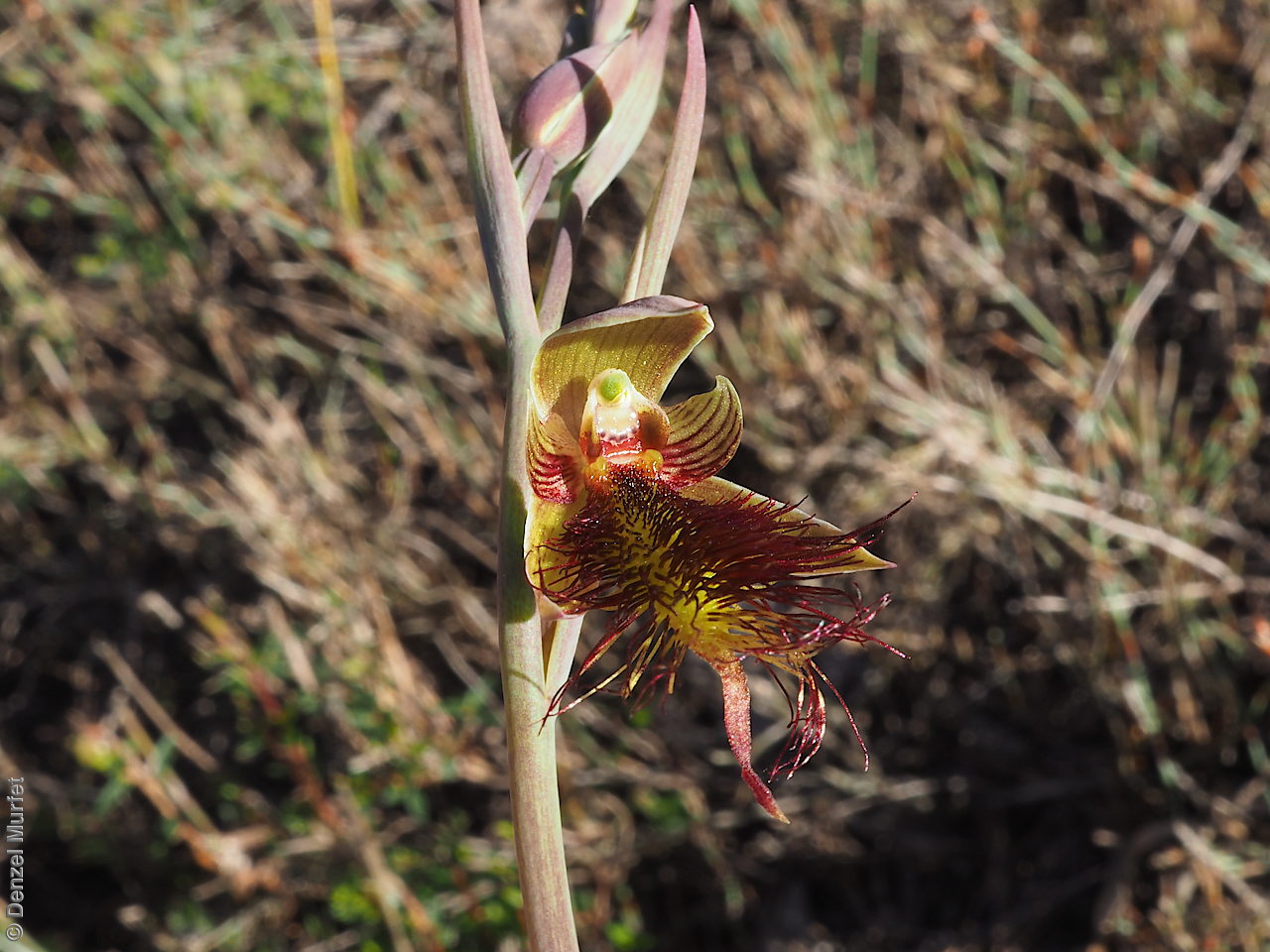
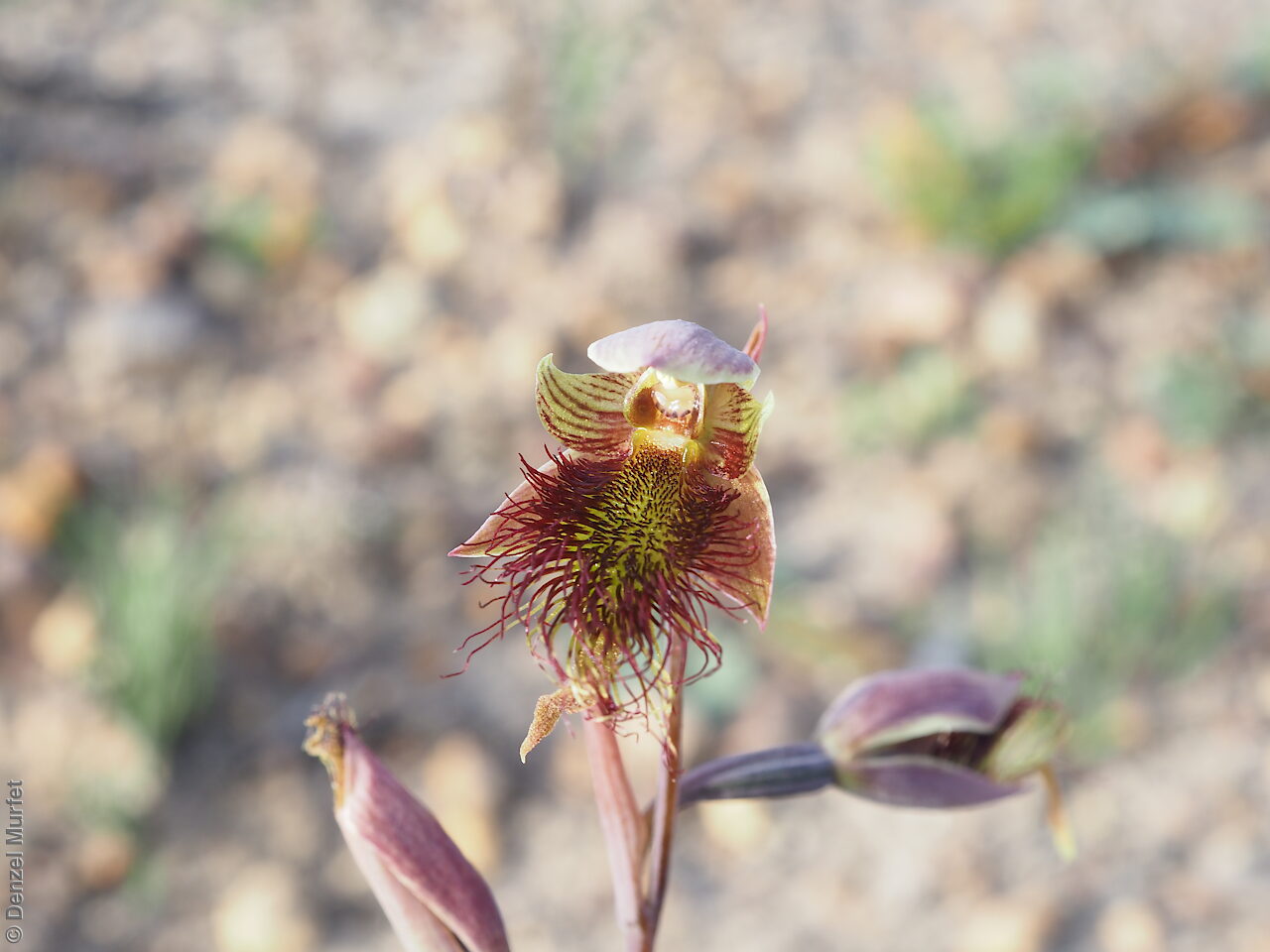
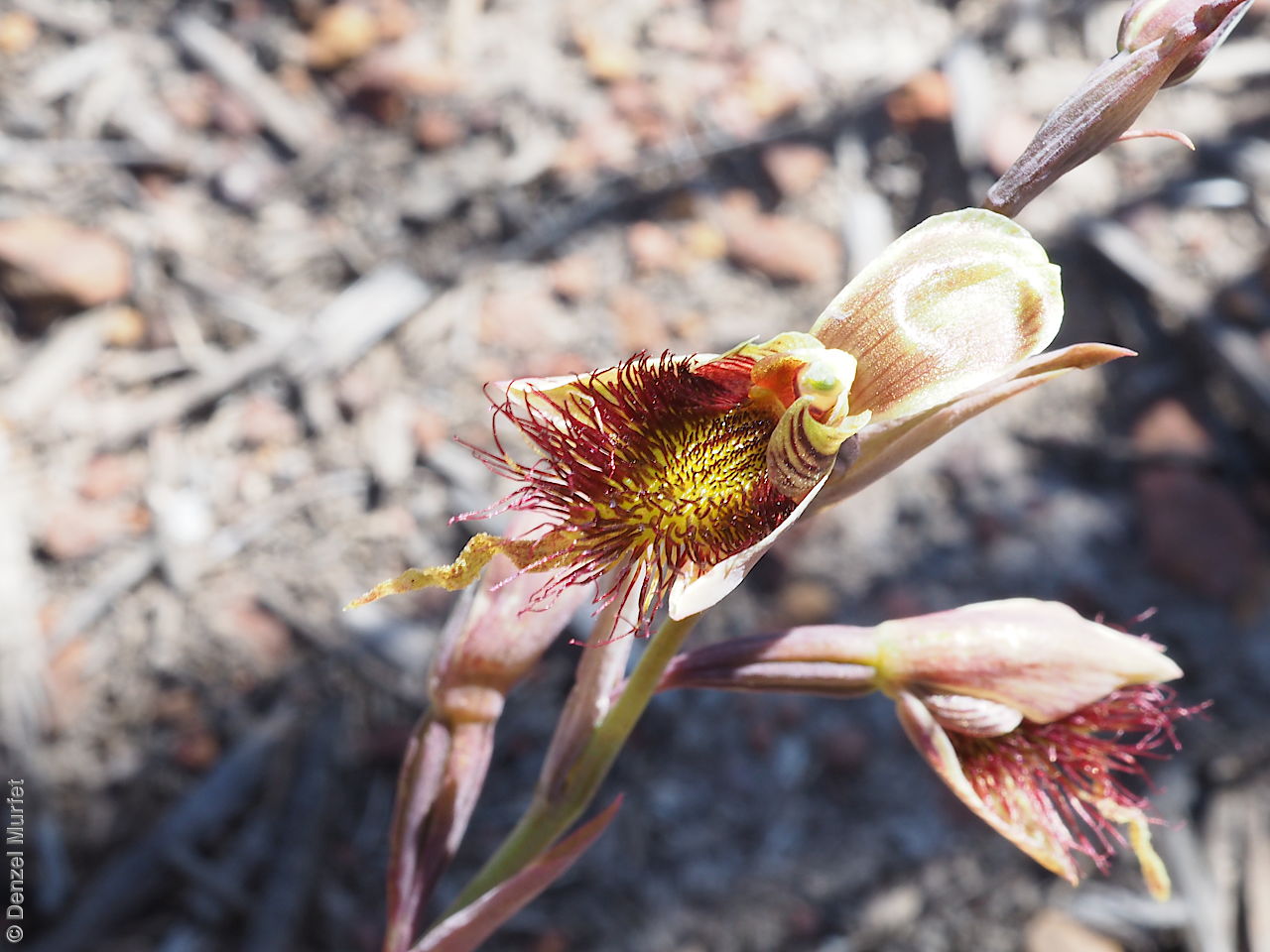

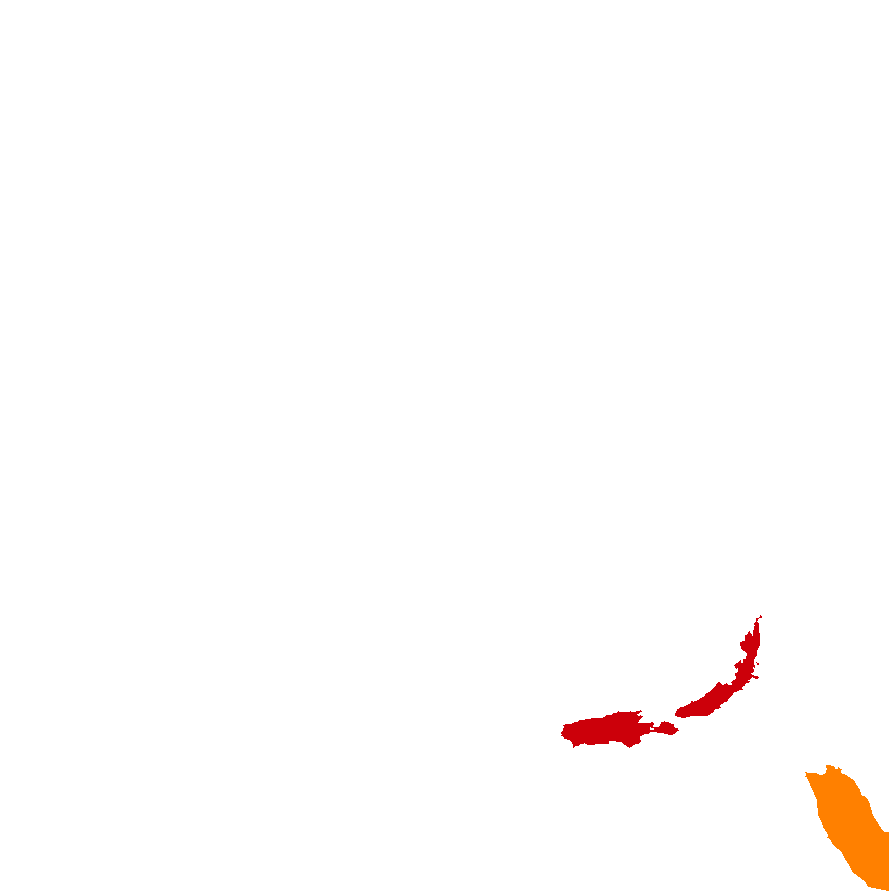
Botanical art
Common names
Swamp Beard-orchid
Red Beard-orchid
Etymology
Calochilus from the Greek 'callos' meaning beauty and 'cheilos' meaning lip, referring to the ornamented labellum of most species. Paludosus from the Latin 'paludosus' meaning marshy or swampy, referring to the favoured habitat for the species.
Distribution and status
Found on Kangaroo Island, southern Mount Lofty Ranges and the lower South-east in South Australia, growing on peaty and leached sands around swamp margins or on raised peat mound in open swamp. Also found in Queensland, New South Wales, Victoria, Tasmania and New Zealand. Native. Very rare in South Australia. Common in the other States.
Herbarium regions: Southern Lofty, Kangaroo Island, South Eastern
AVH map: SA distribution map (external link)
Plant description
Terrestrial, slender to quite stout orchid growing to 50 cm tall. Leaf single, to 18 cm long, about half as long as the flowering stem, thin and not very rigid. Flowers 1-5 on a slender and rigid stems, yellow-green with red stripes and reddish hairs on the labellum. Dorsal sepal, broad-elliptic, to 15 mm long, lateral sepals little smaller, triangular, to 15 mm. Labellum is very distinctive, covered with short linear red calli at the base and long reddish copper glistening glandular hairs at its tip. Flowering between October and November. Fruits are brown papery ellipsoid capsule. Seeds are very small brown ellipsoid seed with a long cylindrical translucent brown mesh-like covering.
Seed collection and propagation
Collect seeds between November and December. Collect fat capsules as they start to dry and turn brown. Pods will split and release the seeds quickly and will require monitoring. To increase the chances of collecting mature pods, it is recommended that a small breathable bag (ie. Organza bags) be used to enclose the developing capsules. Place the capsules in a container that will hold fine seeds and leave to dry for a few weeks or until the capsule split. Then carefully hold the capsule and tap it gently to release the seeds. Store the seeds with a desiccant such as dried silica beads or dry rice, in an air tight container in a cool and dry place, refrigerator or in liquid nitrogen. Seed germination in Calochilus species is difficult without compatible mycorrhizal fungi. More research is needed in order to understand the germination requirements in the genus Calochilus.
Fire response
Obligate re-spouter and re-seeder.
Longevity: >20 years
Time to flowering: 1 year from re-sprouting tubers. 2-3 years from seeds.
Recovery work
In 2020-2021 this species was assessed post-fire in 1 year old fire scars. A total of 361,100 seeds have been collected & banked for a population along Baxters Road, Kangaroo Island. Further populations will be assessed and seeds collected from Kangaroo Island in 2021–2022. Germination screening testing the response to fire cues will be undertaken in 2021.This project was supported by the Emergency Seed Collecting Fund, a grant awarded to the Australian Seed Bank Partnership by the Royal Botanic Gardens, Kew on behalf of the UK Government.
| Location | No. of seeds (weight grams) | Number of plants | Date collected | Collection number Collection location | Date stored | % Viability | Storage temperature |
|---|---|---|---|---|---|---|---|
| BGA | 361,100 (0.140 g) | 7 | 3-Dec-2020 | Baxters Road Kangaroo Island | 28-Jun-2021 | N/C | -18°C |
| BGA | 291,000 (0.117 g) | 12 | 25-Nov-2022 | DJD4134 South Eastern | 21-Jun-2023 | N/C | -18°C, -80°C |
Number of plants: This is the number of plants from which the seeds were collected.
Collection location: The Herbarium of South Australia's region name.
% Viability: Percentage of filled healthy seeds determined by a cut test or x-ray.